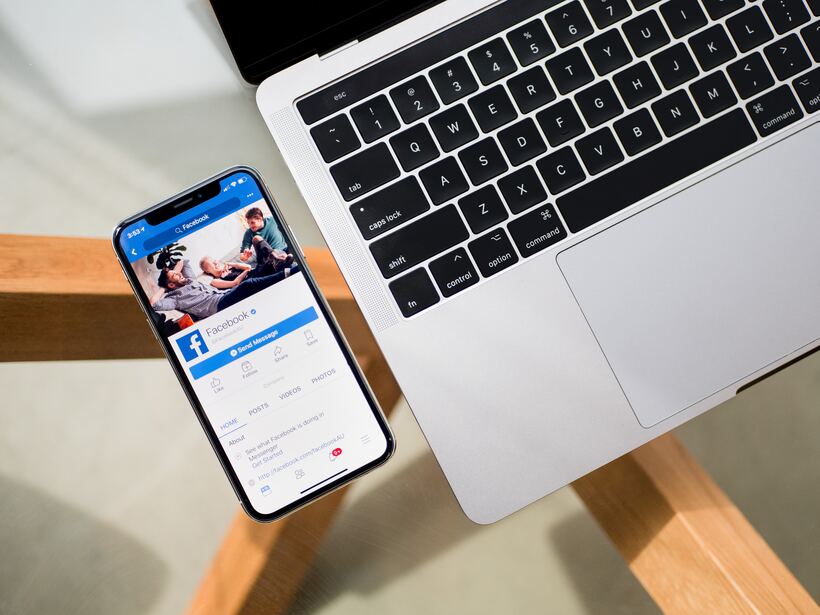User testing tools and usability testing are essential in product development. They are two key components. Both aim to improve user experience. But, it's crucial to understand the differences. This is vital for optimizing design and functionality. In this blog post, we will explore user testing vs. usability testing effectiveness. We will look at their unique roles, methods, and impact on design. Let's start user journey to uncover the mysteries behind these key tests!
What is The Difference between User Testing and Usability Testing?
User testing focuses on watching people interact with a product or service. It aims to find usability issues and get feedback on their experience. User testing is the process where real users perform tasks to find areas for improvement in the design or function. Software testing typically is a methodical evaluation process.
It assesses how easy and efficient it is for users to do tasks in a system. This testing aims to measure a product's user-friendliness. It does so by analyzing factors like navigation, layout, and ease of use. Two types of testing share the goal of usability testing of improving user's experience. User testing gets qualitative feedback from participants. Conduct usability testing uses quantitative data to measure performance metrics.
Understanding usability test vs. user test
Understanding usability testing vs. user testing is essential. You need to grasp the nuances between these two approaches. They are for gathering feedback for product development. Usability testing focuses on evaluating how easy a product is to use. It also looks at how intuitive the product is. You watch users interact with the product.
You're looking for design flaws or issues that may hinder their experience. User testing techniques delves deeper. It aims to understand the needs, preferences, and behaviors of specific users. It aims to gather insights on how real users use the product. It finds what improvements can be made to make them happier. Usability testing emphasizes functionality and ease of use. But, user testing shows user experiences (UX). It also reveals their emotions and motivations in their interactions with a product. Incorporating UX testing frameworks can further enhance the understanding of user experiences, providing structured approaches to assess emotional responses and user motivations during usability evaluations.Distinguishing between user testing and usability testing
User testing and usability testing are two crucial in product development. But, they serve different purposes. User testing focuses on watching how real users interact with a product.
- It uncovers issues and gathers feedback on their experience.
- Usability testing is different. It evaluates ease and efficiency by testing a product's functionality against set criteria.
- User testing involves real users doing tasks to assess satisfaction.
- The differences between usability testing and user testing are notable.
- Usability testing focuses on metrics such as task success rate and time to complete actions. It relies on quantitative data for usability testing analysis.
- On the other hand, user testing is often more qualitative, relying on observations and user interviews to understand user experiences and behaviors.
- User testing delves into the key difference between user perceptions and emotions towards a product.
- Usability testing techniques are more structured, as it evaluates goal measures of performance.
Both methodologies play integral roles in refining products for optimal user experiences, leveraging usability testing tools to gather valuable insights and data.
Exploring the types of testing platforms
There are many types of testing platforms. They are for user testing and usability testing. These platforms range from online tools that allow remote testing. They also include in-person sessions done in usability lab. Online platforms offer convenience and access. They let testers give feedback from anywhere. They often include features like a tool like screen recording and heatmaps. They also have surveys to gather full data on user interactions.
Lab tests provide control. Researchers can watch users there. This allows for deeper insights into user behavior. They come from real-time feedback on preferences. Some popular testing platforms include UserTesting, UsabilityHub, Optimal Workshop, and Maze. Each platform has unique features. They tailor to various parts of user research and product goals.How Do User Testing and Usability Testing Help in Product Development?
User testing and usability testing are crucial in product development. They provide valuable insights into how users interact with a product or service. User testing involves watching real users do tasks. The goal is to find usability issues and gather feedback on the user experience. Incorporating UX testing services can provide specialized expertise and usability tools to conduct these tests efficiently, ensuring comprehensive evaluation of usability and user experience aspects.
This helps developers understand user preferences, pain points, and areas for improvement. But, usability testing evaluates a product's ease of use and how well it meets goals. By testing early, developers can find obstacles. These obstacles may hurt user satisfaction or task completion. This iterative approach allows for continuous refinement. Based on user feedback. It leads to more intuitive and products. We incorporate user testing and usability testing into the product cycle. This ensures that we create designs for the best UX design process and address any concerns about functionality or interface well. Usability testing can help ensure that the designs meet performance goals and usability standards.
Testing methods for user and usability testing
There are many methods for user and usability testing. They can gather valuable insights. User testing involves real users. They interact with a product or service and provide feedback on their experience. You can accomplish this by performing tasks, surveys, interviews, or observations. Incorporating usability test planning into these methods helps structure the evaluation process and ensures that specific usability objectives are met effectively.
Usability testing focuses more on testing ease and efficiency. It looks at a product's interface. Researchers use methods such as eye-tracking usability studies. They also use click tracking. They use think-aloud protocols and A/B testing in usability testing. They use these methods to find areas to improve. Both user and usability testing are crucial. They find issues early in development. Companies can refine their products based on user feedback. They do this by using diverse user testing methods tailored to each approach. This can enhance the user experience.The role of usability testing in identifying product or service issues
Usability testing is crucial. It uncovers potential issues in a product or service. They can find areas for improvement by watching real users interact with the product. They may not have been obvious otherwise. These tests give important insights. They show how users navigate the interface and where they encounter obstacles. They also show which features they find confusing.
Usability testing helps companies find usability issues early in development. This saves time and resources later. It allows for iterative improvements based on user feedback. They lead to a more intuitive and user-friendly product. By analyzing user behavior in these tests, businesses can make informed decisions. They can use the decisions to enhance the UX/UI design and user experience. Finding pain points and friction in a product through usability testing is vital. It's key for making products that resonate with users and meet their needs well. The feedback from these tests guides design decisions and ensures the product matches user expectations. Integrating UX/UI design considerations into usability testing facilitates a holistic approach to refining products, focusing not only on usability but also on the overall user experience and interface design.Utilizing prototypes in user testing processes
Prototypes are crucial in user testing. They offer a concrete perspective on the product or service under development. They let designers and developers gather feedback from users. They get it early in the design phase. By testing prototypes with real users, teams can find usability issues. They can also learn about user preferences and make smart design choices. Using prototypes in user testing helps find flaws.
It also finds areas for improvement before investing in full-scale development. This iterative approach saves time and money. It addresses issues proactively, not retroactively. Also, prototypes enable testers to mimic real product interactions. This allows for more accurate feedback on how the product works and the user experience. Adding prototypes to user tests is a strategic move. It ensures the final product meets user needs and expectations well.Incorporating contextual inquiry into the testing process enhances this approach by directly observing users in their real-world environments, providing insights into their behaviors, needs, and challenges within specific contexts of use.
What are The Key Components of User Experience Testing?
User experience testing has many key parts. They are essential for evaluating a product's usability and user satisfaction. One key part is task analysis. In it, we identify and test user tasks. This is to ensure smooth product use. Also, collecting user feedback is vital. It helps us understand users' preferences, pain points, and ideas for improvement.
Usability metrics measure efficiency, effectiveness, and satisfaction. They provide data on how well users can do tasks in the product. Observing user behavior provides insights. They show how users interact with product features. Also, persona development creates fictional representations of target users. This helps tailor testing scenarios to them. Accessibility testing ensures the product is usable. It ensures this for people with diverse needs and abilities. These parts work together. They improve the user experience and drive iterative improvements in product design.
Importance of user research in user testing
User research is crucial in understanding the user testing importance. It provides valuable insights into the behavior and preferences of target users. Thorough research helps us understand users needs and allows for better testing strategies. Researchers gather data through surveys, interviews, and observations to find key pain points or areas for improvement in a product or service. This deep understanding of user views helps testers create relevant test scenarios.
These mimic real-life situations and lead to more accurate feedback. User research also helps identify user segments. Demographics or psychographics form the basis for these. This ensures comprehensive test coverage across user groups. Also, adding user research findings to testing improves a product. It makes the product more usable and functional. Investing time and resources in user research leads to successful user testing. This drives meaningful UI/UX improvements to the end-user experience.Defining the target users for effective testing
Defining the target users for effective testing is crucial. It ensures the gathered feedback is relevant and insightful. Understand who your users are. Know their preferences, behaviors, and needs. Then, you can tailor your testing approach to get valuable insights. Consider factors such as demographics and psychographics.
Also, consider user goals. Use these factors to define your target audience for testing. This will help in creating scenarios that resonate with real user experiences. Breaking up your sentence. It can provide a more focused approach to testing. You divide users by key traits. Also, using real users in testing ensures that the feedback is authentic. It represents how real users use your product and interact with it.This targeted approach helps uncover specific pain points or areas for improvement. They might otherwise go unnoticed.Exploring usability issues through user testing
When it comes to user testing, exploring usability issues is a crucial aspect of the process. Testers observe how users interact with a product or service. They can find obstacles that may hinder a smooth user experience. This could be confusing. It could be due to navigation menus that are unclear.
It could be due to unclear instructions on how to use a feature. Finding these usability issues early through user testing. It lets developers and designers make needed changes. Before launching the product, we do this. It ultimately helps in creating products that are more intuitive and . Users' feedback during testing gives valuable insights. It shows what aspects of the product need refining for optimal usability. Testers can find areas that may frustrate users. They can do this by carefully watching how users use the interface. Fixing these usability issues raises customer satisfaction. It also boosts adoption of the product or service being tested.Understanding the focus of user acceptance testing
UAT is a critical phase in the product development process. Real users check the product's functionality before it goes live. During UAT, end-users test the software in real conditions. They do this to ensure it meets their needs and expectations. This testing type focuses on validating 2 things.
First, that the system operates as intended. Second, that users can do tasks smoothly. The main goal of UAT is to get user feedback. Before launching, it checks if the product meets their needs and if any changes are needed. Involving real users in this phase helps developers find issues. They can also find areas to improve. Earlier tests may have missed these. UAT helps ensure the final product matches user preferences and user testing objectives. It also ensures it matches business objectives. It lets stakeholders confirm that the software meets set criteria. It performs as expected in real-world scenarios. Companies can improve user satisfaction. They can also reduce risks by using UAT to add user feedback. UAT helps them avoid launching a flawed product.What are The Different Types of Usability Testing Methods?
Usability testing uses various methods. They gather insights into how users interact with a product or service. One common method is the moderated usability test. In it, a moderator guides participants through tasks. They also observe their interactions in real-time. This hands-on approach allows for immediate feedback and in-depth understanding of user behavior.
Another type of usability testing is unmoderated usability testing. It lets users complete tasks alone, without direct supervision. This method is scalable and cost-efficient. Tests can be done remotely with larger samples. A/B testing compares two versions of a design or feature. It aims to find which is better based on user metrics, like click-through or conversion rates. This method helps in making data-driven decisions for optimizing user experience. Eye-tracking technology is also used in usability testing. It analyzes where users focus group on a website usability or interface. By tracking eye movements, researchers can find areas of interest. They can also find potential design improvements for better engagement. These usability research methods are different. They give valuable insights into user behavior and preferences. They help businesses improve their products or services for optimal user satisfaction.
Comparing specific usability testing methods
Many methods can be used in usability testing. They gather feedback on product function and user experience. One common method is the heuristic evaluation. In it, experts assess the interface using established usability principles. Another way is A/B testing. It involves comparing two designs to see which gets more user engagement.
Eye tracking is fascinating. It tracks where users look on a screen. It provides insights into visual hierarchy and attention. Think-aloud protocols encourage participants to verbalize their thoughts. They do this while navigating through a product. This gives real-time feedback on their decision-making. Remote usability testing allows for flexibility. Testers can join from different places using online platforms. Each method has its strengths and limits. So, it's important to choose the best one based on project goals and limits.Exploring the benefits of moderated testing
Moderated testing offers a unique advantage in user research. It provides real-time feedback from participants.In moderated and unmoderated sessions, researchers can watch users interact with the product or service. They gain valuable insights into user behavior and thought. This hands-on approach allows for deeper exploration of user preferences and pain points.
Moderated testing has one key benefit. You can ask follow-up questions and clarify responses right away. This direct interaction helps find hidden issues. They may not be clear in other tests. Additionally, moderators can guide users through tasks, ensuring a more structured evaluation process. Also, moderated testing fosters collaboration. It is between researchers and participants. It creates a dynamic setting for open communication. Participants feel heard and valued. This leads to richer feedback. The feedback can inform iterative design improvements. Moderated testing has usability benefits. It uses a personalized approach to understand user experiences deeply. Incorporating observational studies into moderated testing adds another layer of insight by directly observing participants' behavior and interactions, providing nuanced understanding and actionable feedback for iterative design enhancements.How user groups are utilized in usability testing
User groups are crucial in usability testing. They provide diverse perspectives and insights. These groups have individuals who represent a product's target audience. They ensure feedback is relevant and helpful. It can uncover a wider range of issues and preferences. How? By involving users from different demographics, behaviors, and backgrounds.
We select user groups carefully. They are based on specific criteria. This ensures they give comprehensive feedback during testing. This approach lets designers and developers address usability challenges early. They can then make informed decisions to improve the product. Working with user groups helps in finding common pain points. It also helps in understanding user behavior patterns and improving the user experience. User groups offer valuable input. They guide design changes through active participation in usability tests. Their feedback influences decision-making. It's about functionality, navigation, content, and visuals. Adding diverse user group perspectives to testing can help improve products. It lets companies do this. They can make them better meet user needs and expectations.Incorporating techniques like cognitive walkthroughs into usability testing can further enhance the evaluation process by focusing on users cognitive processes and interactions with the interface, identifying potential usability issues and informing design refinements.
How Can User Testing and Usability Testing Impact User Interface Design?
User testing and usability testing are crucial. They shape user interface design. Real users can give designers valuable insights. They show how people use the interface. User testing focuses on observing people as they use the product. They provide direct feedback on what works well and what needs improvement. Usability testing is different. It involves judging the ease and efficiency of the interface.
This method helps find any barriers that users may encounter while using the product. Both tests provide designers with data. They can use it to refine and optimize the user experience. Designers can use feedback from user and usability testing. It will help them make informed decisions. They will decide about layout, navigation, visuals, and interaction in the interface. These insights help create a more intuitive design. It is user-friendly and meets its target audience's needs.
Identifying specific user tasks for usability testing
For usability testing, identifying user tasks is crucial. It gets valuable insights. The tasks should be like real-life situations. Users would encounter them while using the product or service. By defining clear tasks, testers can see how users navigate the interface. They can also see how users complete actions. Tasks should be realistic and relevant to the goals of the product.
Each task, like making a sale or filling out a form, should give useful feedback. It should highlight usability issues. Also, tasks can vary in complexity. They can assess different parts of user experience. This ranges from basic navigation to more advanced interactions. Usability testing focuses on specific tasks. It helps designers and developers find areas to improve. They can then iterate on solutions that enhance user satisfaction. This targeted approach ensures products are not only easy to use. They are also functional.Exploring how usability testing helps in user interface development
Usability testing plays a crucial role in refining user interface development. By watching real users interact with the interface, designers can find pain points. They can also find areas for improvement. This process helps in creating interfaces that are intuitive and user-friendly.
- Usability testing helps designers get feedback on the layout, navigation, and overall user experience of the interface. This feedback is invaluable in making informed decisions to enhance the design and functionality of the UI. Designers can refine the interface based on user insights by conducting usability tests at different stages of development.
- Incorporating iterative testing into the development process ensures continuous refinement and improvement of the interface based on user feedback gathered from multiple testing cycles.
- This approach is iterative. It ensures that issues are addressed early. Usability testing results in a better end product.
- Usability testing improves user satisfaction and boosts engagement and retention rates. It's a vital tool in ensuring that the final user interface meets both business objectives and user needs seamlessly.
Incorporating mobile app testing into usability testing further enhances the process by specifically evaluating the unique usability challenges and user experience aspects associated with mobile applications, ensuring optimal performance and usability across various mobile devices and platforms.
Understanding the interaction between users and the product in testing
Understanding how users and the product interact in testing is crucial. It is key for refining the user experience. By watching how users use a product, interact with its features, and give feedback, developers can make informed choices. They can use these choices to improve usability. User testing and usability testing play a vital role in bridging the gap between what users expect from a product and what it delivers. Using feedback from both user and usability testing helps. It makes products intuitive, efficient, and enjoyable to use. During testing, understanding the link between users and products is key. It leads to better designs that meet user needs well.

